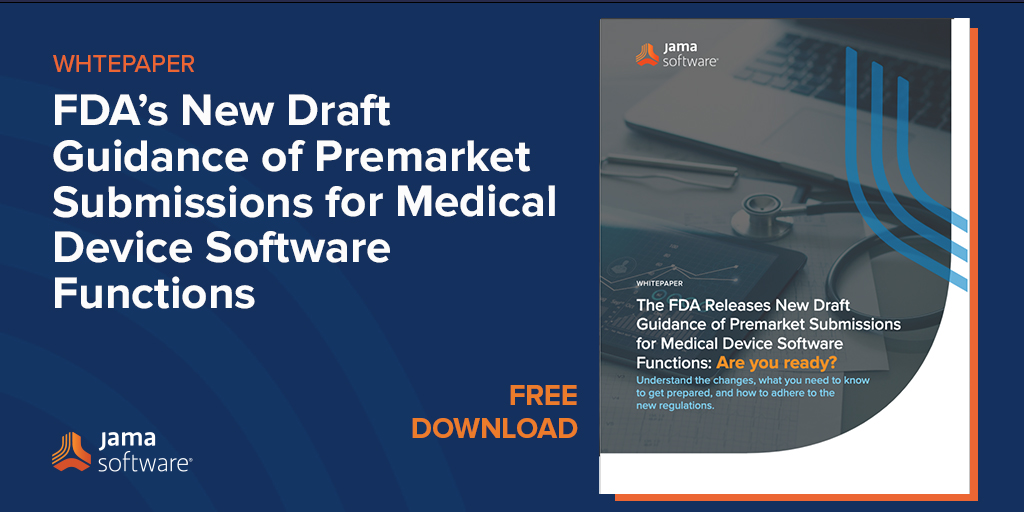>
In this blog, we preview our whitepaper “FDA New Draft Guidance of Premarket Submissions for Medical Devices: Are you ready?” Download the entire whitepaper to learn more!
FDA New Draft Guidance of Premarket Submissions for Medical Devices: Are you ready?
Technology innovation has undergone rapid transformation since the Food and Drug Administration first developed its “Guidance for the Content of Premarket Submissions of Software Contained in Medical Devices” in 2005. Over the past 17 years, significant advancements have disrupted the market, including the advent of the smartphone, watches that monitor your sleep and snoring habits, and smartphone-connected pacemaker devices, just to name a few.
The medical device industry has also undergone a sizable transformation, which is why the FDA recently released the “Premarket Submissions for Device Software Functions” draft guidance to keep up with the changes. Please note that while this guidance is valuable to medical device developers to get a sense of what’s to come, it is not currently being enforced.
It’s also important to note this guidance applies to all premarket approval (PMA) and to some 510k’s, based on risk level.
The new draft guidance, which as of March 2022 has not yet gone into effect and therefore is currently non-binding, revises documentation standards that apply to the software development, design verification, and design validation processes.
As you work to adapt to the new guidance, you might have many questions, including “Who and what does the new guidance apply to? And what exactly has changed?” Answering these important questions will assist you with getting ready for the changes, which are set to finalize in spring 2022.
The New Guidance: Does It Apply To Your Device?
The new guidance applies to all premarket submissions that include at least one device software function. However, it’s not intended to provide recommendations on how a device’s software should be developed, verified, and validated. Software in a medical device (SiMD) and software as a medical device (SaMD) are both included in the guidance. The following are also included, according to the FDA:
- Firmware and other means for software-based control of medical devices
- Stand-alone software applications
- Software intended to be operated on general-purpose computing platforms
- Dedicated hardware/software medical devices
- Accessories to medical devices when those accessories contain or are composed of software
Recent changes made to section 520 of the Federal Food, Drug, and Cosmetic Act under the 21st Century Cures Act excludes some types of software, including those that are lower-risk, support software, such as certain mobile applications for consumers, and software for administrator support to laboratories. Additionally, the guidance does not apply to automated manufacturing and quality system software or software that is not a device.
Related: How Össur Uses Jama Connect to Keep Millions of People Moving
To learn more, download the entire whitepaper where we cover a summary of the draft guidance, plus:
- The difference between the new and old guidance
- Documentation levels: Basic vs. Enhanced
- Software documentation elements
RELATED
- FDA Issues Comprehensive Draft Guidance for Developers of Artificial Intelligence-Enabled Medical Devices - January 15, 2025
- 2025 Expert Predictions for Medical Device & Life Sciences: Innovations in Patient-Centered Care and the Future of Medical Device Design - January 9, 2025
- Jama Connect® Enables DevSecOps Through Robust API and Integrations That Connect All Activity to Requirements - January 7, 2025
